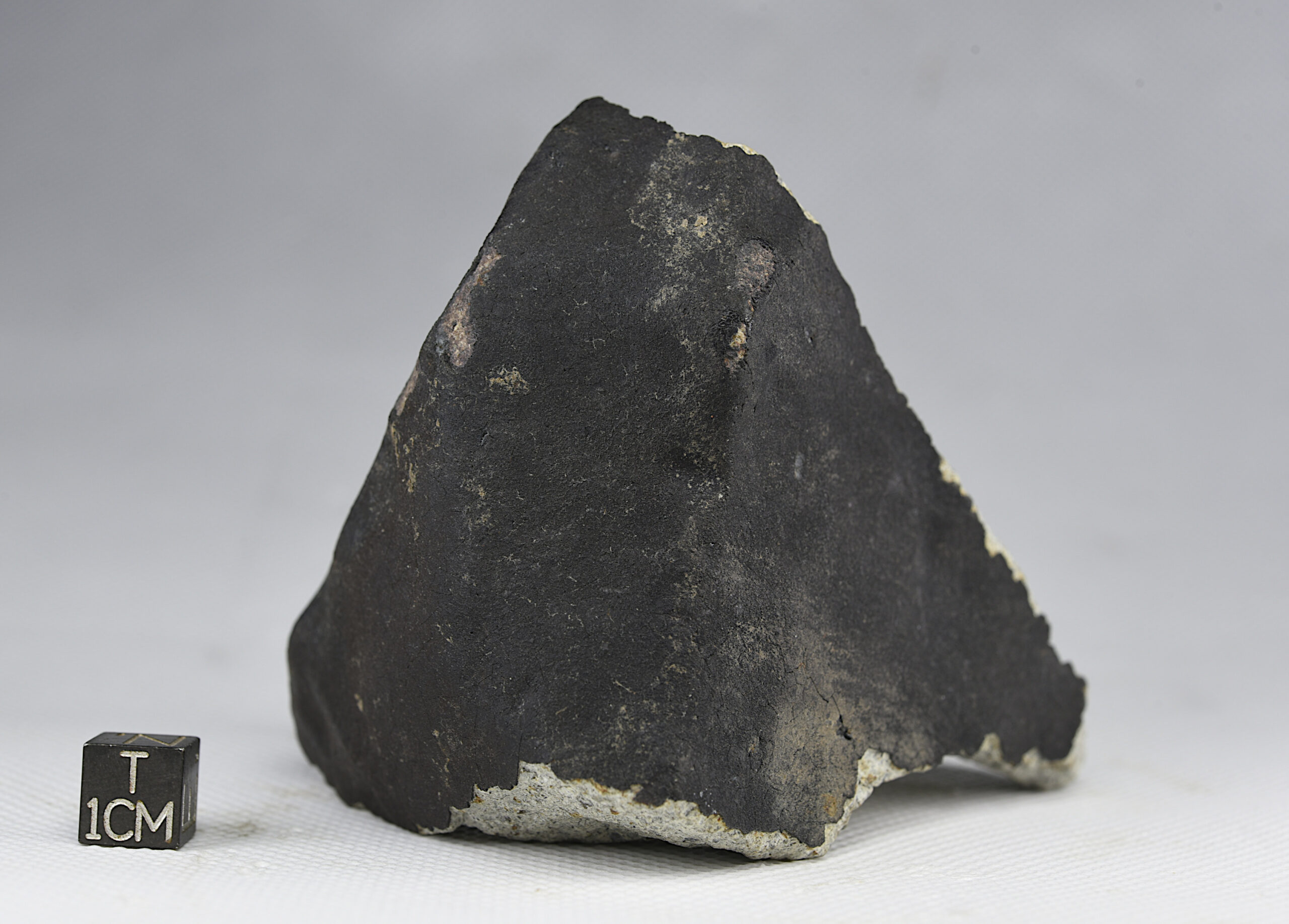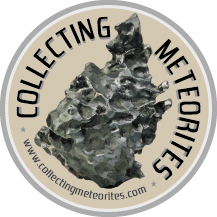
| Price : 1900€ |
Boutel Fil 12°34’58.2’’N, 14°56’45.6’’E
Chari-Baguirmi, Chad
Confirmed fall: 2023 July 8
Classification: Ordinary chondrite (LL6)
History: On the night of 8 July 2023, a meteorite shower occurred on flat, cultivated land, in fields and among small settlements north of the town of Boutel Fil. Three sonic booms were heard. People found black stones on the ground the following morning and started to collect them. The event triggered media coverage in Chad, leading to private initiatives to recover stones from the villagers. Marcin Cimala (Poland) sent a 33 g sample to Ansgar Greshake (MNB) for classification. Jean-Claude Doumnang, professor of Geology at the University of N’Djamena and responsible for the declaration of the previous fall from Chad, Andila (2014), heard about the event while in France working with P. Rochette (CEREGE). Upon return to N’Djamena in early August he visited the Ministry of Mines, which had sent geologists to inquire about the event on July 23. They were shown the site where a large stone had excavated a shallow cavity in soil about 0.5 m in diameter. This site is the one for which coordinates are reported. They were able to observe 6 fully crusted fresh stones from 44 to 316 g. They also made pXRF analysis of one stone, confirming the chondritic composition (abundance of Mg and Fe, presence of Ni). In N’Djamena Jean-Claude Doumnang and his contacts met a number of people who own pieces of the meteorite, and secured two samples, for N’djamena University and for CEREGE.
Physical characteristics: Many individual rocks, most of which are partly to completely covered with pale black fusion crust. Broken surfaces display a fresh light-grayish interior.
Petrography: (A. Greshake, MNB) The meteorite is an ordinary chondrite showing a thoroughly recrystallized texture with few poorly delineated relict chondrules. Main minerals are olivine, low-Ca pyroxene, and sodic plagioclase (grain size about 70 µm). More minor phases include Ca-pyroxene, Cl-apatite, troilite, and rare FeNi metal. Few black melt clasts are present.
Geochemistry: olivine: Fa27.9±0.2 (Fa27.6-28.3, FeO/MnO=54±2, n=7); low-Ca pyroxene: Fs22.0±0.3Wo1.7±0.2 (Fs21.7-22.5Wo0.9-1.0, FeO/MnO=31±2, n=7); Ca-pyroxene: Fs8.8±0.4Wo43.0±2.3 (Fs8.6-9.7Wo37.3-44.1, FeO/MnO=22±2, n=7); feldspar: An10.2-10.7Ab83.4-85.2Or4.3-6.0, n=7. Magnetic susceptibility, measured with SM30 instrument is log χ (× 10-9 m3/kg)=3.99.
